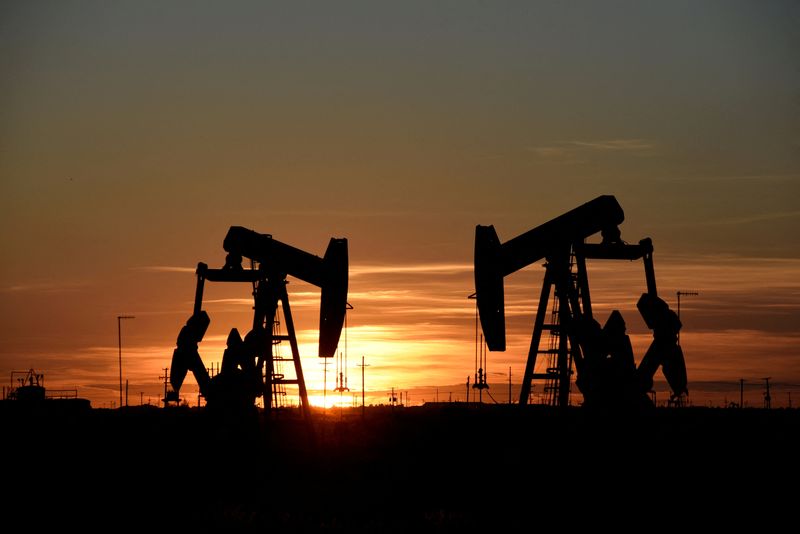By Scott DiSavino
NEW YORK (Reuters) -Oil futures were flat to lower on Wednesday as the U.S. dollar strengthened and investors worried that rising interest rates would slow the economy and cut fuel demand.
Oil's losses were limited as the market discounted a big build in U.S. crude stocks due to a data adjustment and as the International Energy Agency (IEA) forecast higher global oil demand growth.
Brent futures slid 20 cents, or 0.2%, to $85.38 a barrel, while U.S. West Texas Intermediate (WTI) crude fell 47 cents, or 0.6%, to $78.59.
The U.S. dollar rose to a near six-week high against a currency basket on strong U.S. retail sales data last month and recent U.S. inflation data, suggesting the Federal Reserve (Fed) will keep monetary policy tight.
"Crude prices are under pressure as the dollar rallies following impressive economic data that paves the way for more Fed tightening," said Edward Moya, senior market analyst at data and analytics firm OANDA.
A stronger dollar can cut oil demand, making crude more expensive for holders of other currencies.
Federal Reserve officials said the U.S. central bank will need to maintain gradual interest rate increases to fight inflation. Investors worry higher rates could slow the economy.
U.S. crude stockpiles jumped by 16.3 million barrels last week to 471.4 million barrels, their highest since June 2021, the U.S. Energy Information Administration (EIA) said.
That was much bigger than the 1.2 million-barrel increase analysts forecast in a Reuters poll. [EIA/S] [API/S] But analysts said an unusually large crude oil supply adjustment contributed to the outsized build.
"Once everyone realized the adjustment threw off the EIA data, scepticism about the big (crude storage) build crept into the market," said John Kilduff, a partner at investment advisory Again Capital LLC in New York. "It's a one-off."
The IEA raised its forecast for 2023 oil demand growth and said there could be a supply deficit in the second half due to restrained production from OPEC+, the Organization of the Petroleum Exporting Countries (OPEC) and other oil suppliers including Russia.
The IEA said China will make up nearly half of this year's oil demand growth after it relaxed its COVID-19 curbs, and also said about 1 million bpd of production from Russia will be shut in by the end of the first quarter, citing a European ban on seaborne imports and a Group of Seven (G7) price cap.

The G7 group of wealthy countries includes Canada, France, Germany, Italy, Japan, Britain and the United States.
On Tuesday, OPEC also raised its projection for global oil demand growth and pointed to a tighter market in 2023.